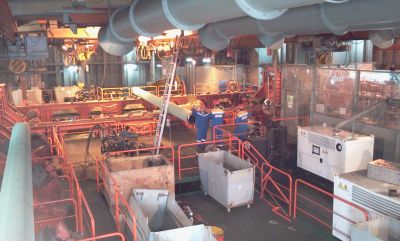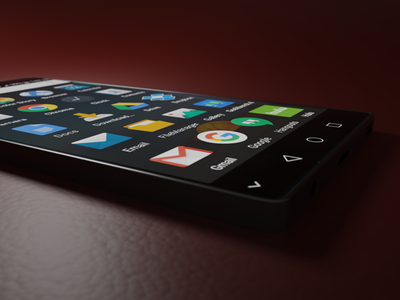A Complete Guide For Industrial Ceramic Coating
 Every industry requires nuts, bolts, and golf clubs to firearms, engine parts, or heavy equipment. Their maintenance with ceramic coating becomes an important part of the industry for smooth production flow.
Every industry requires nuts, bolts, and golf clubs to firearms, engine parts, or heavy equipment. Their maintenance with ceramic coating becomes an important part of the industry for smooth production flow.
Industrial ceramic coating is a chemical solution applied to the exterior of the product to save from external damage.
In addition, ceramic coating saves equipment from scratches and harsh chemicals that result in improved functionality.
What is Industrial Ceramic Coating?
A Ceramic Coating is a liquid polymer substance that is applied to the product surface. It is a brittle, heat-resistant nonmetallic mineral that is reshaped at a very high temperature. The ceramic coatings can range from highly oriented to semi-crystalline, completely amorphous coating. Ceramic has a wide range of performance attributes that helps it to apply on every hard, tough, or electrical conductivity surface.
There is a list of major ceramic material used for the coating process:
- Aluminum Oxide (Alumina): it is used to maintain wear on the product surface’s resistance and non-conductivity. It is combined with corrosion resistance substances.
- Chrome Oxide: It is used to seal product surfaces.
- Zirconium Oxide: It helps in molten metal contacts and is used for thermal coatings barriers.
- Titanium Dioxide: Titanium saves the hard surfaces from grains when the surface will be used in farming areas like tractors or other farming equipment.
- Alumina-Titania: It is applied to devices that are used for seawater activities like ships. Its non-conductive property saves the application.
What is the ceramic coating process?
ceramic coating is applied on surfaces in multi-stages. It begins with cleaning, roughening, then goes with multilayers of the coating. But the final coating depends on the strength of the ceramic layer. Here we have a list of the most common ceramic coating methods:
- Plasma Spraying: during the plasma spraying process ceramic powder is pass through extremely high temperatures. Sometimes it reaches 30,000 F degrees also and it takes the shape of gas. Then the gas particles spread on bond onto the surface. This is also called high-density coating and can be a little more expensive compared to other modes of the coating.
- Detonation Gun: This process is used for certain ceramic coating materials that require high dense coatings on a metal surface. The melting point of ceramic powder is at 6000 F degree that involves a great explosion of oxygen and acetylene gas. The high-speed gun is operated toward the target surface very carefully.
- Oxygen Acetylene Powder: Under this method, the heating point of ceramic powder is quite less than the plasma spraying and detonation gun method. It requires a 5000 degree (F) flame for coating on the surface to create a bond.
- Oxygen Acetylene Rod: Under this, ceramic powder passes through a burner at a 500-degree temperature only. Pressurized gas creates a cohesive bonding by spray molten ceramic material at a high level.
In addition to this, there is great technology advancement seen for coating processing. Experts like Desert Coating are choosing high temp exhaust ceramic coatings, lubrication ceramic coatings, corrosion-resistant ceramic coatings, abrasion resistant ceramic coatings for high-quality coating.
Where the industrial ceramic coating is applied?
Industrial ceramic coating is applied on various surfaces for safety and longevity. Some of the recommendations are as follows:
- Seal Surfaces: basically, the sealing surface is used in heavy-duty and high-speed industrial applications which are used in steel production. Apart from this., it can also be used in food manufacturing, pharmaceutical equipment, and power generation equipment.
- To minimize leakage: All processing equipment that has a high tendency of leakage use this ceramic coating on product or machinery surfaces.
- Sealing to reduce Bearing Contamination: machinery or tools which are more prone to wear and tear making this coating. Metal, rubber, and polymer products can also benefit from this.
- High-speed devices: land-based aerospace turbine components that require protection from high temperatures require this coating. It provides a solution for their long-lasting life.
- Thermal Shock: ceramic coating when divided into a three-layer system then this application is used. It also involves a metallic base coat ceramic layer top coating, zirconium oxide. Some of the projects like missile steering vanes require this type of ceramic coating.
What are the benefits of the industrial ceramic coating?
Ceramic coating helps in improving and boosting the life of components from wear and high temperatures. Therefore, some companies conduct the ceramic coating process after a fixed interval. Here we have more reasons for choosing ceramic coating by different industries:
- Increase application life.
- Improved productivity
- Protection against high-temperature
- Thermal and electrical insulation
- Upgrading products from thermal shock
- Easy Chemical acceptance on application
Using ceramic coating on the application helps in reducing cost and improved business performance without description and breakouts. Regular coating at aerospace, hydroelectric, steel, and coal energy applications helps in reducing maintenance costs.
What you need to be careful while the industrial ceramic coating?
Different types of products require different types of coating. Therefore it is essential to be careful while choosing a coating form and style for your applications. Some appliances require a high-temperature coating whereas others need low temperature. Here we have some factors that help you to choose the right coating method for your equipment:
Check Temperature Range
When choosing a ceramic coating for machinery or another device, carefully check what temperature the device’s surface can bear. Some organic surfaces tend to break out at 400 degrees F temperature.
Therefore, it is essential to be careful while choosing the processing method and product formation. Also, many organic surfaces can catch fire above 1800 degree temperatures.
Careful Study Surface Characteristics
Another important factor that needs to be checked while selecting the ceramic coating is its characteristics. Today, there is no dearth of thin-film coating products that can be more prone to crack at high temperatures.
If you apply coating on thick films these will be highly flexible and can work at high temperatures.
Consider Coating Environment
Coating environments are divided into three major categories like indoor, light outdoor, and heavy outdoor. In an indoor environment, you can use stoves, fireplaces for coating. For Light outdoor grills, smokers, fire pits are used for the coating process.
Whereas outdoor are extremely harsh and are used for industrial high temp ceramic coatings.
Summary!!
Ceramic coating is important for every business for the longevity of tools and heavy machinery.
But while using ceramic coating, be careful about the method which will be suitable for your machinery and consider all the necessary precautions.






